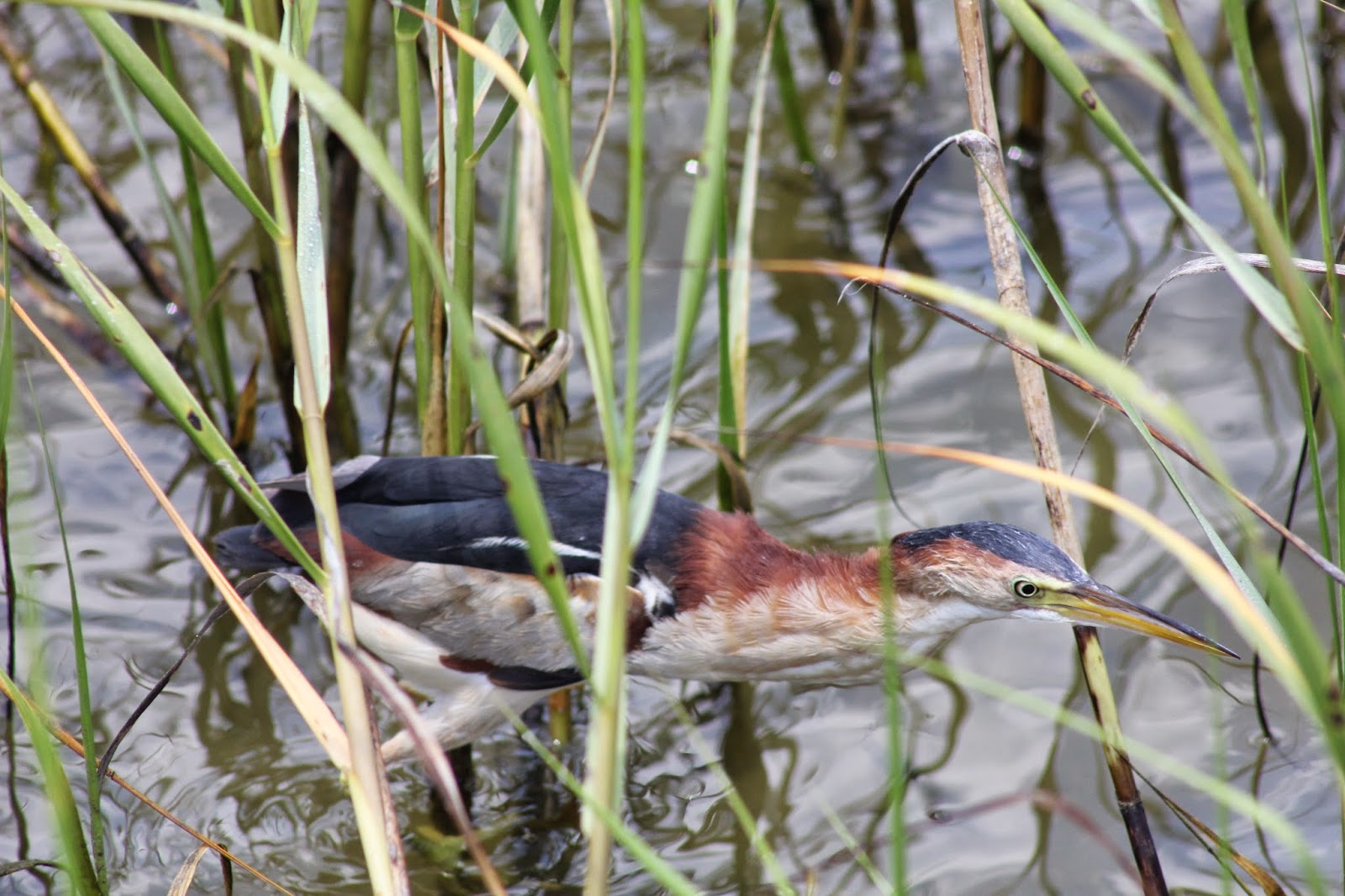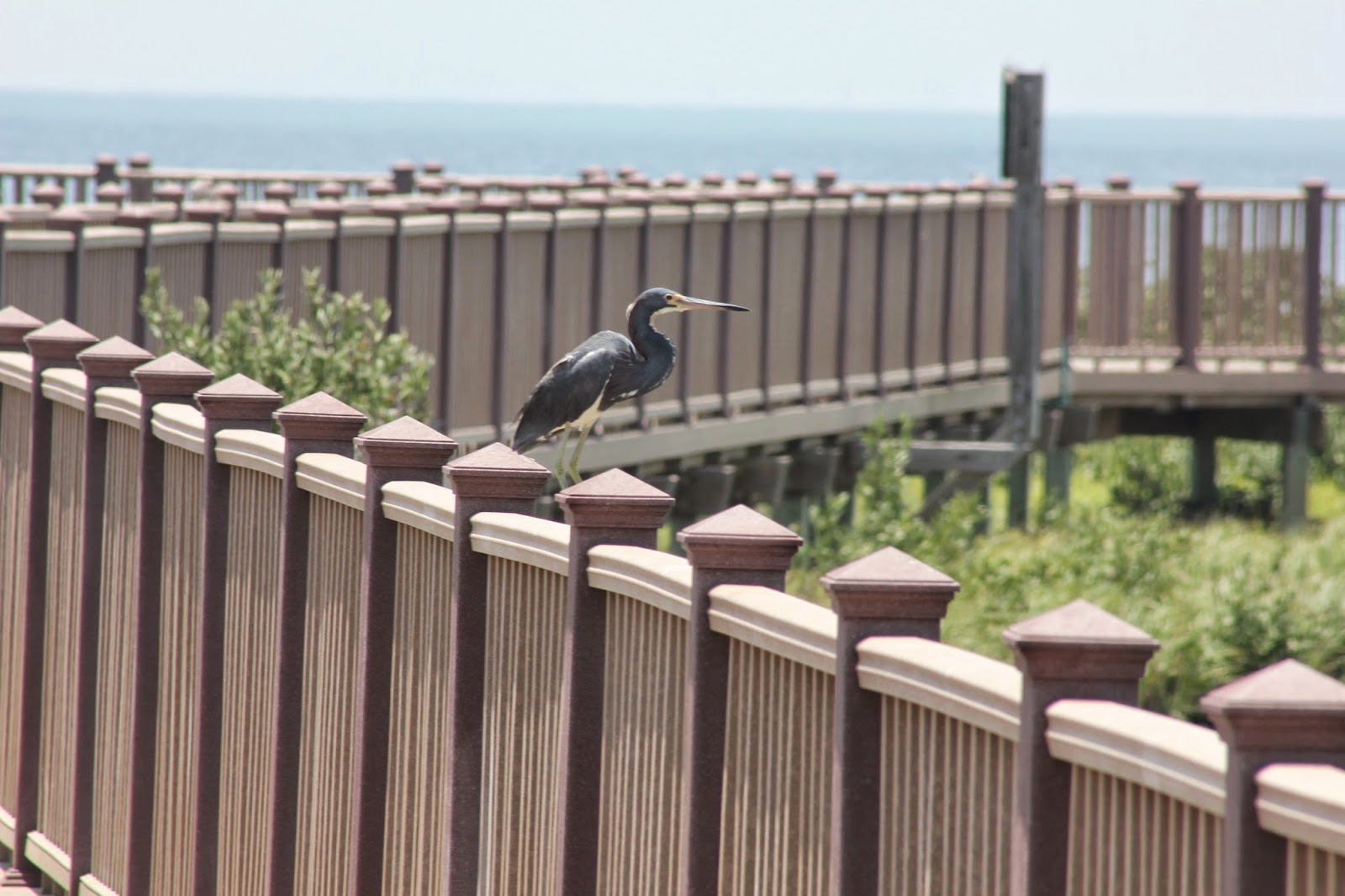We
started the day with the long, deserted drive out to Laguna Astacosa,
celebrated as having the last 30 ocelots in the US.
One can
see why they would choose to be there, the reserve is miles from anywhere along
long straight roads. Along the road we saw our first Harris Hawk sitting on a
post, then some Crested Caracaras squabbling over a bit of road-kill. As we
finally neared the reserve, Leo spotted some Northern Bobwhites.
There
was only one other car at the Visitor Centre (which was closed), so we had the
reserve to ourselves.
The
walks close to the VC were very rewarding, including a Common Nighthawk flushed
from a tree, our first Brown Crested Flycatchers and, best of all, a wonderful
view of an Aplomado Falcon chasing a smaller bird. Such a long, thin, delicate
bird, it has a special place in American Birding because it was all but
diappreaed from the US but has gradually now built up and LA have 6 or 8 in
adjoining territories. A bit like the role the Avocet plays for British
birders.
We
didn’t see any Ocelots, hardly surprising since they are (a) incredibly rare
and (b) nocturnal! But it was a great visit with 30+ species.
Next we
headed off to San Padre Island (picked up Eastern Meadowlark along the way –
very noticeable with the white tail flashes), the bottom end of the
hundred-mile long, one mile wide island that creates the unique lagoon all along
the Texas coast. At Easter, thousands of students descend here for the Spring
Break beach parties, and once one has crossed the impressive bridge, the town
has that feel.
However,
there is a fancy Birding Centre with a boardwalk on the lagoon side which
yielded lots of great birds: terns, herons, waders etc. Several lifers:
-
Least Tern
-
Short-billed Dowitcher
-
Long-billed Curlew (which from its official name looks like it is
different from our Curlew)
-
Least Bittern
and some
great views of Roseate Spoonbill, Pied Billed Grebe, Caspian and Sandwich
Terns.
After a
lot of walking in sweltering heat, a dip in the Bay of Mexico was a great
relief.
 |
| Black Bellied Whistling Duck |
 |
| Bronzed Cowbird - starting its attraction routine: male puffs himself up as shown, then leaps in the air to do a bit of a hovering/buzzing routine. I've seen some blokes try the same. |
 |
| Brown Crested Flycatcher |
 |
| Crested Caracara |
 |
| Harris Hawk |
 |
| Laughing Gull |
 |
| Least Bittern |
 |
| Long Billed Thrasher |
 |
| Reddish Egret |
 |
| Short-billed Dowitchera |
 |
| Tricoloured Heron |
 |
| Yellow-crowned Night Heron |
Laguna
Atascosa
Laughing
Gull l t
Harris
Hawk l t
Crested
Caracara
Black
Vulture
Turkey
Vulture
Northern
Bobwhite leo l t
Eastern
Meadowlark l t
Green
Jay
Long
Billed Thrasher
Great
Tailed Grackle
Groove
Billed Ani
White
Tipped Dove l t
Bronzed
Cowbird
Black
Crested Titmouse
Olive
Sparrow
Red
Winged Blackbird
Aplomodo
Falcon l t
Brown
Flycatcher l t
Common
Nighthawk
Northern
Cardinal
Plain
Chacalaca
Golden
Fronted Woodpecker
Ladder
Backed Woodpecker l t
Great
Kiskadee
Greater
Roadrunner
White
Ibis l t
House
Sparrow
Inca
Dove
Mourning
Dove
Common
Ground Dove
White
Winged Dove
Mexican
Ground Squirrel l t
Eastern
Cottontail
San
Padre Island
Reddish
Egret t
Brown
Pelican t
Tricoloured
Heron t
Eurasian
Collared Dove t
Moorhen
Great
Blue Heron
Least
Bittern t l
Long
Billed Curlew l t
Willet
t
Short
Billed Dowitcher l t
Roseate
Spoonbill t
Black
Crowned Night Heron t
Yellow
Crowned Night Heron l t
Great
White
Black
Winged Stilt
Snowy
Egret t
Caspian
Tern t
Sandwich
Tern t
Least
Tern l t
Mottled
Duck
Black
Bellied Whistling Duck
Pied Billed Grebe
No comments:
Post a Comment